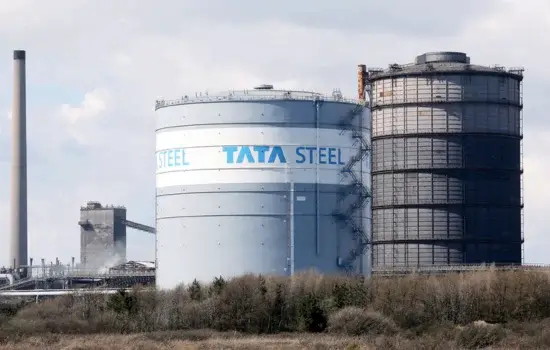Tata Steel, founded in 1907 by Jamsetji Tata, is one of the world’s largest steel producers, with operations spanning India, Europe, and Southeast Asia. It is a vertically integrated company, meaning it controls its entire value chain, from mining raw materials to manufacturing and distributing steel. This integrated approach allows Tata Steel to streamline operations, reduce costs, and maintain better control over pricing and quality.

Tata Steel Key Revenue Streams
1. Steel Production and Sales: Tata Steel generates the bulk of its revenue from the production and sale of steel products. It produces a variety of steel products, including flat and long products, tubes, and specialized steels used in industries like automotive, construction, consumer goods, and aerospace. The company operates on a large scale, producing over 30 million tonnes of steel annually. This large volume of production enables Tata Steel to capture a significant market share globally, including in over 50 countries.
2. Value-Added Services: Apart from steel production, Tata Steel offers value-added services such as coating, processing, and consulting. These services help customers with customized solutions, improving operational efficiency, and enhancing the overall value proposition. Tata Steel also provides technical support to clients, ensuring they receive the right materials and expertise for their specific needs.
3. Mining and Raw Materials: One of Tata Steel’s biggest competitive advantages is its control over key raw materials, such as iron ore and coal. Owning these resources reduces its reliance on external suppliers and helps the company manage costs more effectively, especially when commodity prices fluctuate. This vertical integration also ensures a consistent supply of raw materials, allowing Tata Steel to remain competitive in the global market.
4. Global Exports: Tata Steel earns a substantial portion of its revenue through exports. The company exports steel products to more than 50 countries, including Europe and Southeast Asia. The global demand for steel, especially in developing economies, provides an additional revenue stream. Tata Steel’s geographic diversification helps buffer against downturns in specific regions.
5. Research and Development (R&D) and Licensing: Tata Steel invests heavily in research and development (R&D), leading to the creation of patented technologies and innovations in steel production. The company can license these technologies to other businesses, generating royalty income. Its focus on R&D also helps it develop sustainable practices, such as reducing carbon emissions, which aligns with global environmental standards.
6. Digital Solutions and E-Commerce: Tata Steel has embraced digital platforms such as Tata Steel Aashiyana, which caters to individual home builders. These digital platforms allow customers to browse, select, and order steel products online. This shift to e-commerce helps Tata Steel reach a broader customer base and enhances its market presence.
Cost Structure and Pricing Strategy
Tata Steel’s cost structure is primarily driven by raw materials (iron ore, coal, limestone), manufacturing, and logistics costs. Owning its raw material sources gives the company a significant cost advantage. Additionally, Tata Steel implements a market penetration strategy, keeping its prices competitive to increase market share. By controlling production costs and leveraging its scale, Tata Steel can offer steel at prices that are lower than many competitors.
Global Operations and Diversification
Tata Steel’s global operations, including its plants in India, Europe, and Southeast Asia, allow it to serve a diverse customer base. The company’s operations in Europe, such as Tata Steel Europe, contribute significantly to overall revenue, although it faces challenges like higher operating costs in some regions. However, Tata Steel’s Indian operations continue to be its most profitable, thanks to lower production costs and better access to raw materials.
Conclusion
Tata Steel’s business model relies on a combination of high-volume steel production, value-added services, control over raw materials, and global exports. By integrating its operations from mining to steel production, Tata Steel reduces costs and increases efficiency, allowing it to remain competitive. With its strong focus on innovation and sustainability, Tata Steel continues to strengthen its position as a leader in the global steel industry. Despite challenges such as fluctuating commodity prices and global demand, Tata Steel’s diverse revenue streams and strong market presence keep it profitable and resilient.